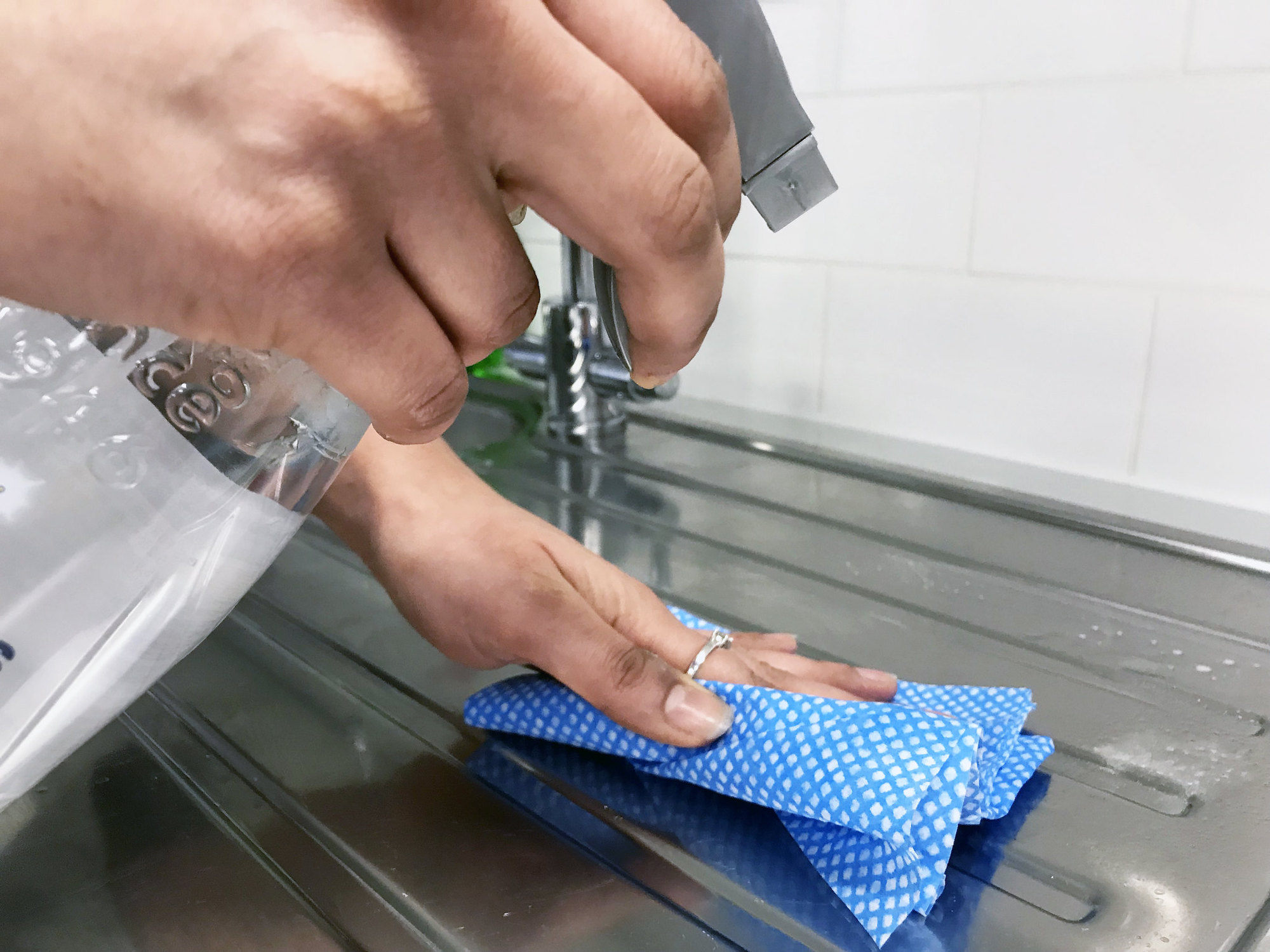Kelly Sikkema via Unsplash
Tina Gregory is always looking for ways to reduce, reuse, and recycle. Not only is it budget-friendly in practice, but she always wants to set a good example for her 7-year-old son, Liam.
Yet it’s because of Liam that Gregory also needs to take some extra precautions in these practices, especially when it comes to reusing. He has asthma, so she needs to make sure that she’s not exposing him to extra dust, microbes, or germs.
“He has a compromised immune system,” Gregory says. “Sure, it seems only minor, but the smallest thing can trigger a flare-up. So this means when I bring new-to-us things into the house, we need to sanitize them first.”
With hand-washing and cleaning practices becoming increasingly important around the world, many people are trying to figure out how to balance green habits with good sanitation. And yes, it is possible.
What does clean really mean?
It’s first helpful to understand the differences between cleaning, sanitizing, and disinfecting. The United States Environmental Protection Agency has defined cleaning as reducing “germs, dirts, and impurities by removing them from surfaces or objects.” This is usually with soap or detergent.
By comparison, sanitizing is using “a chemical product or device that reduces the number of germs to a level considered safe by public health standards or requirements.” Then finally, disinfecting is using “chemicals to kill 99.999% of germs on hard, non-porous surfaces or objects.”
This info is all in a toolkit the EPA created for early childhood education called “Green Cleaning, Sanitizing, and Disinfecting,” and it’s a good look at understanding good sanitation. If you are reusing or recycling within your own home, it might be that a simple cleaning or wipe down is enough. But when it comes to bringing items into your home (or even sending them out), sanitizing and disinfecting is best.
This is especially true for anyone around someone with a compromised immune system. Plus it’s a good practice to help control the spreading of sickness and disease.
Choose your cleaning product with care
Even when you put good sanitation and disinfecting to practice, you want to be mindful of the products you use. They are not all created equal when it comes to being environmentally conscious.
The EPA has some good advice when it comes to choosing products, and they say the best thing you can do is to be informed. Even if a label says “eco-friendly” or “environmentally safe,” these are vague claims. Instead, do a little more digging.
In this article on “Greening Your Purchase of Cleaning Products,”, the EPA writes, “Purchasers should examine as many relevant product attributes as possible, recognizing that tradeoffs are inevitable. For example, one product may be made with renewable resources (a desirable characteristic), while another product has a lower VOC content (also a desirable characteristic).”
High amounts of VOC, which stands for volatile organic compounds, can adversely affect indoor air quality and smog production in outdoor air. Other things to look for when searching for environmentally-friendly products include “readily biodegradable” or “renewable resources.” Both indicate better ingredients that will also break down easier.
Audrey Talbert is the owner of Green Guru Cleaning in Arizona, and she says sticking to simple ingredients is the strategy she uses in her eco-friendly cleaning business. Her most-used product is Oxi Clean, which is essentially a hydrogen peroxide base—a natural product that Talbert says is just as effective as products with lots of chemicals.
“It’s inexpensive, it’s more gentle on your skin, and it doesn’t have fumes,” she says. “I use it for nearly everything.”
She says many people think buying green products will be more expensive, but she says it’s really not once you find good products. It can even be cheaper. No matter what product you use, though, she does have one main tip for achieving good sanitation, and it’s something people often forget about.
“Be sure to leave your product on the surface for a little bit—don’t just wipe it up immediately,” Talbert says. “Just like you need to wash your hands for at least 20 seconds, the same is true for your cleaning product. Spray it on and wait for a bit.”

Clean more and waste less
So once you have good cleaning practices into place, it’s important not to forget about the first part of the three Rs—Reduce. It’s so easy to buy new or replace a product before it’s entirely empty, but this is an easy fix we can all do. We can try to get through the products we buy on a regular basis instead of tossing near-empty containers or switching to a new brand. And we can just reduce the number of products we carry overall.
This practice of being more minimalist is a lesson Gregory tries to teach her son, and she knows it’s one that will pay off long-term.
“We talk about how everyone can do their part to help the Earth,” Gregory says. “And since my son’s generation will be inheriting so much responsibility as they get older when it comes to climate change, I really believe that every little bit matters."
Stacy Tornio is a freelance writer and head of content for the nonprofit Let Grow.
Spray bottle image is used under a Creative Commons license from B&M Stores via Flickr.
